















|
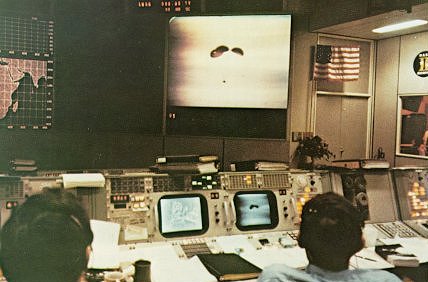
|
| A beautiful sight! Two flight controllers at the Mission Control Center watch the parachute deployment as Odyssey floats down toward a gentle landing in the Pacific near American Samoa. Splashdown, at 1:07 p.m. EST, brought down the curtain on the most harried and critical emergency of the entire manned space program. |
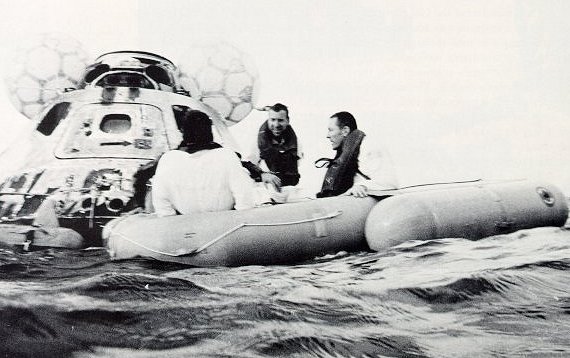
|
| The charred command module splashed down less than four miles from the recovery ship USS Iwo Jima. Three very tired, hungry, cold, dehydrated astronauts await a ride up into the recovery helicopter. They were aboard the recovery ship less than one hour after touching down in the Pacific. |
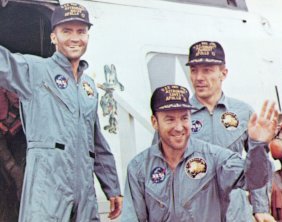
| Haise, Lovell, and Swigert step off the recovery helicopter to the Iwo Jima in the South Seas. The crew lost a total of 31.5 pounds; Lovell alone 14 pounds - records in both cases. Dehydroted and exhausted, Haise was invalided three weeks by infection. |
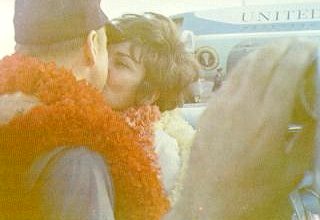
| In Honolulu Lovell is joyously united with wife Marilyn after she and Mary Haise and bachelor Swigert's parents had flown from Houston with President Nixon. During the Apollo 8 mission sixteen months earlier, Lovell had nicknamed a crater on Moon "Mount Marilyn". |
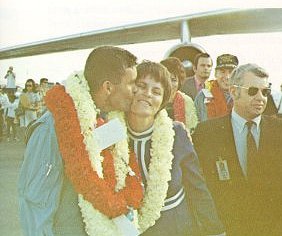
| Fred and Mary Haise draped with Hawaiian leis. A physician had accompanied pregnant Mary Haise to Honolulu in the event Air Force One should have its first airborne birth. However, the Haise's fourth child Thomas did not arrive until ten weeks later. |
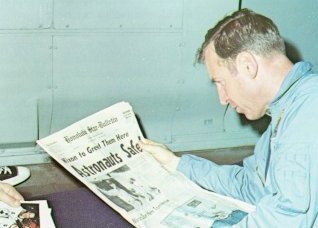
| "We didn't realize the complete magnitude of this flight", said Lovell, "until we got back home and started reading about it." Christian Science Monitor said: "Never in recorded history has a journey of such peril been watched and waited-out by almost the entire human race." |
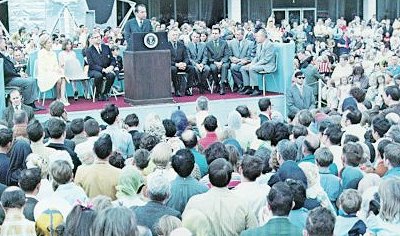
|
| In Houston the 37th President pays tribute to the men who performed miracles in Mission Control to save Apollo 13. To President's right are NASA Administrator Thomas Paine and Mrs. Nixon. To his left: Flight directors Eugene Kranz, Gerald Griffin, Milton Windler (the fourth, Glynn Lunney, is behind lectern), then Chief Astronaut Donald K. Slayton, James A. Lovell III (in uniform), and Sigurd Sjoberg, Director of Flight Operations, who in behalf of "the ground" received the Nation's highest award, Medal of Freedom. |
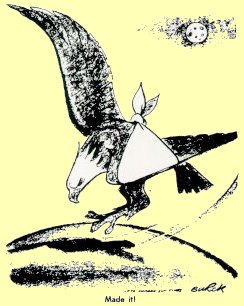
| A collective sigh of relief rose from the millions following the drama of Apollo 13 when the Odyssey splashed down. The CM-shaped bandage on this eagle cleverly depicts the flight home. "Only in a formal sense will Apollo 13 go into history as a failure", editorialized The New York Times. |


